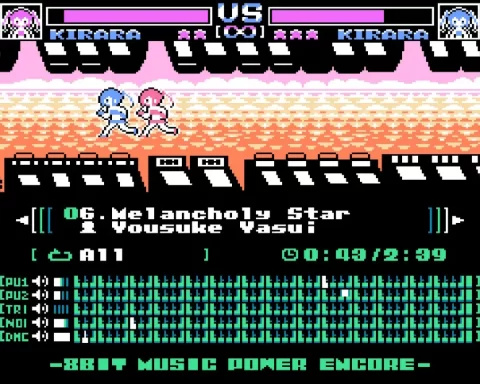For a game developed by a team of just two, Critical Mass is a brilliant start for Aussie startup, Manic Game Studios. It’s elegant and executed perfectly, falling into none of the control or over ambition issues that indie games are often guilty of. Manic Game Studios knows its limits and has opted to go for practical refinement over complex vision. And the result is a must-have puzzler.
 |
| It looks basic, but in action this is a very addictive game |
There are four gameplay modes, but they all feature a variation of the same theme – a cluster of coloured cubes occupies the centre of the playing field, slowly growing and filling the screen. The way to get rid of the blocks is to shoot more coloured cubes at the cluster. Line up four or more and they’ll disappear. It’s game over if the cluster grows too big.
Of course, as is usual for this style of game, there’s the usual combos and high scores to shoot for, and there’s a fairly tough time limit – if you don’t keep right on top of the game, it’s going to be game over quickly. The game records high scores, and with Steam achievements, there some nice incentives to become good at this game.
It’s only real problem is that it’s not a very original game. In fact, in terms of gameplay it’s almost exactly the same as the WiiWare title Cubello – and Critical Mass probably belongs more on WiiWare (or even better 3DSWare) than trying to stand out against some of the massive profile stuff on Steam. I say that because the game really does deserve to stand out, because as limited as it might appear on the surface this one is a far better take on the Cubello formula.
Here, you have full control over the cluster in the middle of the screen. By pressing and holding the left mouse button you can twist the cluster around in any direction. Its scrolls incredibly smoothly and not once will you struggle to find the right angle to shoot the blocks.
 |
| The higher levels can get really, really difficult |
Some game modes include power ups that will slow down the game timer, give a temporary boost to your score, and other similar effects. These add a nice light strategic element to the game, while not complicating things too far – it’s still very much a casual game.
This basic gameplay is also helped by some very attractive presentation. It’s not the most detailed or complex game visually, but the minimalist vibe punctuated by the bold colours of the cubes themselves is understated, but an excellent artistic direction for indie developers to take. The electronic soundtrack is limited and looped, but surprisingly, never grows annoying.
As a fan of the Nintendo-published Art Style games on the Wii and DSi, I was excited to discover this unofficial entry into the series. It’s no epic by any means, but the flawless controls and execution means that it’s one of those pick up and play games that you’ll keep coming back to between longer play sessions.
Or better yet, stick it on the laptop, and play the game during ad breaks on TV. Or on the train, bus, or those boring meetings. It’s versatile like that.







